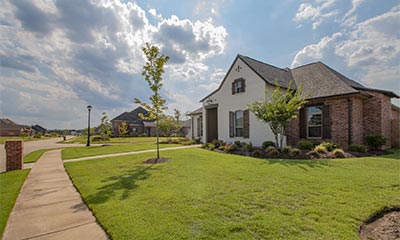The Art and Science of Custom-Crafted Fabrications in Modern Design
Architectural fabrications are the unsung heroes behind the innovative and aesthetically pleasing structures that shape our surroundings. From modern buildings to public spaces, these fabrications play a pivotal role in bringing architectural visions to life. In this comprehensive guide, we will explore the world of architectural fabrications, understanding their significance, various applications, and the intricate processes that go into crafting these elements that define our built environment.
Understanding Architectural Fabrications:
Definition:
Architectural fabrications refer to the custom-designed and crafted elements used in construction and design to fulfill specific architectural or aesthetic purposes. These fabrications are often unique and tailored to the vision of architects, designers, and builders.
Significance:
Architectural fabrications go beyond mere functionality; they contribute to the visual appeal, structural integrity, and overall character of a space. From decorative elements to structural components, these fabrications showcase the fusion of art and engineering in the built environment.
Applications of Architectural Fabrications:
Structural Components:
Architectural fabrications play a crucial role in creating the skeletal framework of buildings. This includes beams, columns, trusses, and other load-bearing elements that provide stability and support to structures.
Decorative Elements:
From ornate railings and balustrades to intricate facades and cladding, architectural fabrications add decorative flair to buildings. These elements contribute to the unique identity and aesthetic appeal of architectural designs.
Customized Features:
Architectural fabrications offer the flexibility to create customized features that meet the specific needs of a project. This can include unique staircases, specialized lighting fixtures, and other one-of-a-kind elements that define a space.
Exterior Finishes:
Facades and exteriors are often enhanced by architectural fabrications. This can involve the use of materials like metal, glass, or composite panels to create visually striking and durable exterior finishes.
Interior Design Elements:
Architectural fabrications extend into the interiors, contributing to the overall design and functionality of a space. This may involve crafted metalwork for interior railings, decorative screens, or bespoke furniture pieces.
The Process of Architectural Fabrications:
Design Concept:
The process begins with a design concept that addresses the specific needs and aesthetic goals of the project. Architects and designers collaborate to create detailed plans and specifications for the fabrications.
Material Selection:
Choosing the right materials is a critical step in architectural fabrications. Factors such as durability, aesthetics, and budget influence material choices. Common materials include metals (steel, aluminum), glass, wood, and composite materials.
Computer-Aided Design (CAD):
CAD technology is often employed to translate design concepts into detailed, precise plans. This allows for accurate measurements, angles, and intricate detailing that are crucial for the fabrication process.
Fabrication Techniques:
The fabrication process may involve various techniques, depending on the chosen materials and design complexity. This can include cutting, welding, bending, casting, and machining. Advanced technologies like laser cutting and 3D printing may also be employed.
Quality Control:
Quality control measures are implemented throughout the fabrication process to ensure that the finished elements meet the specified standards. This includes dimensional accuracy, surface finishes, and structural integrity.
Installation:
Once the fabrications are crafted and quality-checked, they are transported to the construction site for installation. Precision is key during this phase to ensure a seamless integration with the overall architectural design.
Examples of Architectural Fabrications:
Metalwork:
Intricately designed metal railings, gates, and facades showcase the artistry of architectural fabrications. These elements often feature detailed patterns, geometric shapes, or custom motifs to enhance the visual appeal.
Glass Structures:
Architectural fabrications with glass components create modern and transparent designs. Glass staircases, partitions, and curtain walls exemplify the versatility and aesthetic possibilities of glass in architectural fabrications.
Wooden Features:
Wooden architectural fabrications bring warmth and a natural touch to spaces. Custom-designed wooden panels, beams, and furniture contribute to both structural and decorative aspects of a building.
Composite Materials:
Composite materials, combining different elements for enhanced performance, are increasingly used in architectural fabrications. These materials offer durability, flexibility, and unique design possibilities.
Lighting Installations:
Architectural fabrications extend to lighting fixtures, where custom-designed metal or glass structures house unique lighting elements. These installations not only illuminate spaces but also serve as decorative focal points.
Challenges and Considerations in Architectural Fabrications:
Budget Constraints:
Custom architectural fabrications can be cost-intensive. Balancing design aspirations with budget constraints requires careful consideration to ensure that the project remains economically viable.
Material Compatibility:
Choosing materials that are compatible with the environmental conditions, such as weather exposure, is essential for the longevity and performance of architectural fabrications.
Regulatory Compliance:
Adhering to building codes and regulatory standards is crucial in architectural fabrications. Compliance ensures that the fabrications meet safety requirements and pass necessary inspections.
Integration with Design:
Seamless integration of architectural fabrications with the overall design is vital. Fabricated elements should enhance the architectural vision rather than appearing disjointed or out of place.
Conclusion:
In conclusion, architectural fabrications are the artisans' canvas within the realm of construction and design. These custom-crafted elements not only fulfill structural and functional roles but elevate the aesthetics of our built environment. From the grandeur of metal facades to the subtlety of wooden accents, architectural fabrications showcase the marriage of creativity and engineering precision. As architects, designers, and fabricators continue to push the boundaries of innovation, the world of architectural fabrications remains a dynamic and evolving field, contributing to the ever-changing tapestry of our architectural landscape.





Comments